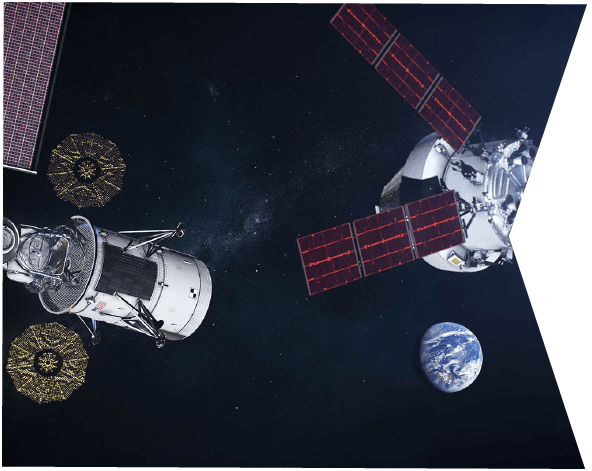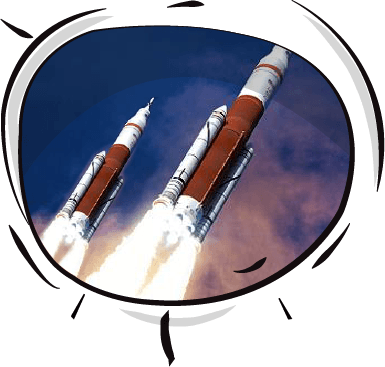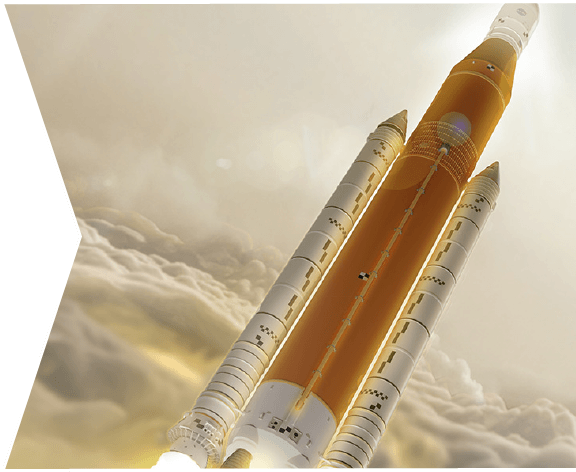









The initial configuration of SLS can send more than 26 metric tons (57,000 pounds) to the Moon, and future upgrades will enable the rocket to send at least 45 metric tons (99,000 pounds). Towering a staggering 322 feet tall, taller than the Statue of Liberty, SLS will weigh 5.75 million pounds and produce 8.8 million pounds of thrust at liftoff, 15 percent more thrust than the Saturn V rocket.

The SLS booster is the largest, most powerful solid propellant booster ever built for flight. Standing 17 stories tall and burning approximately six tons of propellant every second, each booster produces 3,600,000 pounds of thrust – greater than 14 four-engine Boeing 747’s at full take-off power.

The SLS core stage is powered by four RS-25 engines. Each RS-25 engine is about the size of a compact car and weighs about 8,000 pounds. The core stage towers more than 200 feet tall and holds 196,000 gallons of liquid oxygen and 537,000 gallons of liquid hydrogen.





NASA and its partners are designing and developing a small spaceship in orbit around the Moon for astronauts, science and technology demonstrations known as the Gateway. Located about 250,000 miles from Earth, the Gateway will enable access to the entire surface of the Moon and provide new opportunities in deep space for exploration.
This new era of sustainable human exploration requires advanced technologies that are efficient, affordable and reliable. Solar electric propulsion offers these benefits and is a key technology for the Gateway. The first element to launch to space will be the power and propulsion element in 2022. This alternative propulsion system will enrich exploration at the Moon by enabling orbit transfers and reusable space tugs to and from the lunar surface.

